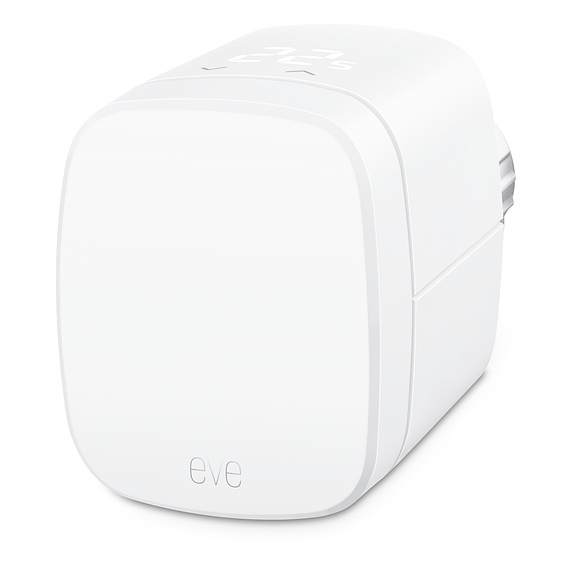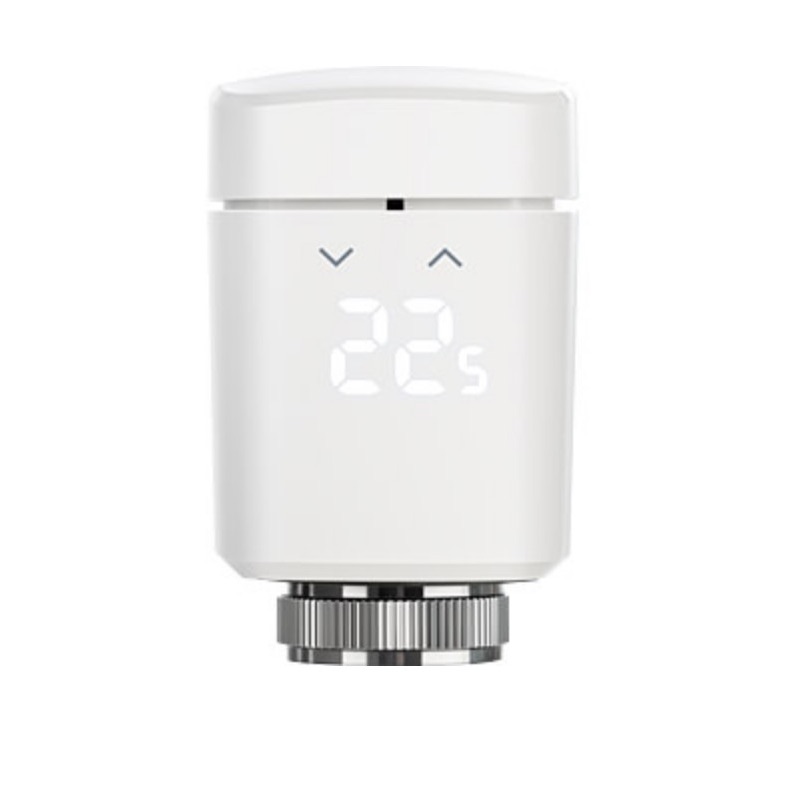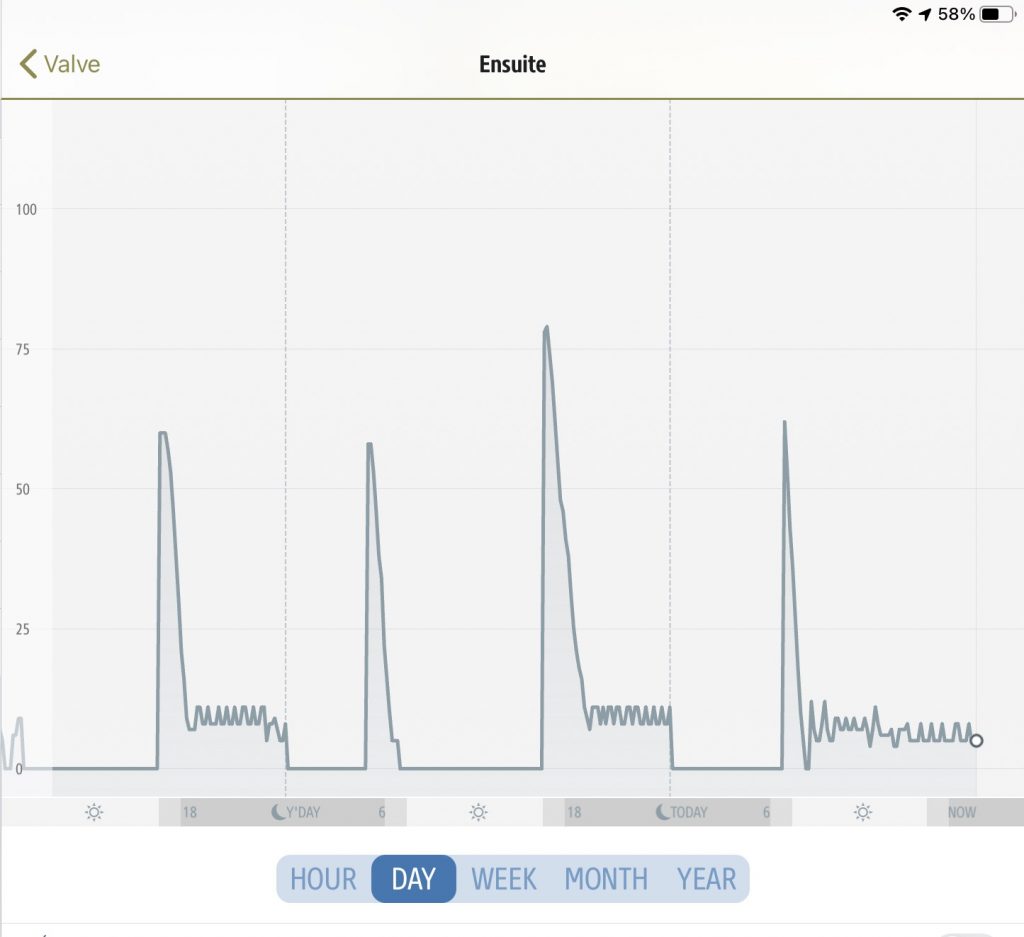We currently have eight Eve Thermo electronic thermostatic radiator valves (eTRVs) in service. These valves allow us to set heating schedules and target temperatures for rooms individually, for example don’t heat the lounge of weekdays before the evening or don’t heat the playroom after the children’s bedtime. All the existing valves are the original version.
However I’ve just bought two more valves with a view to expanding control to the bathroom and ensuite. I want to add these rooms as they tend to be rooms where the windows are left open (allowing heat to escape) and the ensuite in particular is often too hot and difficult to it’s difficult to regulate the temperature as it’s immediately above the boiler. These new valves are the second generation. So what are the differences between versions?

Eve Thermo eTRV 
New Eve Thermo eTRV
The two versions are very similar if not the same size. The most obvious difference is that the new version has a small display and buttons allowing the temperature to be adjusted. A setup item allows the orientation of the display to be adjusted so that the temperature display is the preferred way up. The display illuminates briefly when the buttons are used to adjust the temperature.
However there are other small differences:
- Vacation mode. The older version has a vacation mode for winter vacations when the schedule is disabled, but heating will be enabled below the lower temperature set point. The newer version doesn’t seem to have this mode, so my existing vacation scene sets these individually: mode = on, schedule = off, temperature = 10 Celsius to achieve the same result.
- Lower temperature set point. In the older version the minimum possible scheduled temperature stored in a valve was 10 degrees, but a scene could set a lower temperature down to 5 degrees. I use this facility overnight to stop a rarely-used room pulling on the heating overnight in winter while still providing frost protection. However the newer version seems to have a common minimum temperature of 10 degrees. I have thus modified and renamed a scene that previously explicitly set 5 degrees to set minimum temperature, that is either 5 or 10 degrees according to valve generation.

Original version 
Second version
I plan to install my two new valves in the lounge which has two radiators, and use the displaced older valves in the bathroom and ensuite.
After installation we’re now up to 10 eTRVs divided between 8 rooms (bathroom, cloakroom, daughter’s bedroom, ensuite, lounge x2, master bedroom x 2, playroom and wife’s study). Most of these rooms have individual schedules; while bathroom, cloakroom and ensuite heating is on when any other room heating is on. The latter also have window sensors and are disabled while the window is open, while the lounge also has a movement sensor which curtails heating in the evening if no movement is detected (which otherwise provides heating for my wife’s late film viewing).

The image above shows the operation of the eTRV in the ensuite which was previously the room with the greatest difficulty in maintaining an appropriate temperature – often being too hot as almost directly above the boiler. Here we can see brief morning openings and much longer evening openings on weekdays, and heating all day on Saturday. In all cases the valve initially opens wide (60-80%) to warm the room up, and then gradually closes over time until the temperature is maintained with a relatively small opening (~10%).
The system has several modes:
- Summer – which provides temperature monitoring, but no control.
- Vacation – which provides minimum temperature control, but no schedules.
- Winter – which provides temperature scheduling with two schedules available – one for working days and one for non-working days (not necessarily weekdays and weekends) selected from a standard Apple calendar.
